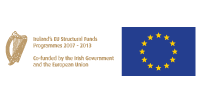Clay Field Therapy
Work at the Clay Field is a bottom-up Sensorimotor Art Therapy approach, which has been developed by Prof Heinz Deuser in Germany since the 1970s.
The client at the Clay Field works in a flat wooden box filled with approximately 10 kilos of clay; the clay is evenly and smoothly spread, filling the entire box; a bowl of water and a sponge are supplied.
With closed eyes, the client makes contact with the material and the hands find their way through touching, scratching, digging, kneading, patting, beating. Shapes start to emerge, scenes become created, destroyed, recreated.
The haptic sense of touch is the most fundamental of human experiences. Infants rely on sensorimotor feedback to feel safe and loved; to be rocked, held and soothed is communicated through touch. Love, sexuality as well as violence are primarily communicated through touch. Our skin boundary becomes invaded through inappropriate touching, through accidents and medical procedures. The majority of traumatic memories involve touch.
The regressive quality of clay in a therapeutic context allows a therapist to address early attachment issues, developmental setbacks and traumatic events in a primarily non-verbal way. The focus is not on the story of what-happened, but on what-do-I-need-to-do-now to find an adequate response.
Clay has the unique ability to feedback every imprint we make. As I touch the clay, I am touched by it. In this way the encounter at the clay field allows us to gradually rewrite our biography, to respond in a new way, to find a fuller more connected flow of our life force. Emerging research shows that Clay Field Therapy is deeply therapeutic particularly for traumatised children, and adults.
Cornelia Elbrecht

Cornelia Elbrecht AThR, SEP; ANZACATA, IEATA is the Founder and Director of the Institute for Sensorimotor Art Therapy and School for Initiatic Art Therapy, Victoria, Australia. A leader in groundbreaking art therapy techniques with a particular focus on healing trauma, she is an art therapist with over 40 years of experience.
She is a renowned author and educator. She studied at the School for Initiatic Therapy in the Black Forest, Germany and holds degrees in fine arts and arts education along with extensive postgraduate training in Jungian and Gestalt Therapy, Bioenergetics and at the Somatic Experiencing Training Institute (SETI). Best known for her cutting edge work with Guided Drawing and Clay Field Therapy, she holds regular workshops around the world and at Claerwen Retreat in Apollo Bay, Australia – an internationally respected arts therapy education facility.
Author of numerous books, she runs accredited online courses for art therapists, educators and mental health professionals seeking to understand a body focused art therapy approach to trauma therapy. Over the past thirty years, she has brought the unique Work at the Clay Field to the international community and trained art therapists, teachers and other mental health professionals in Clay Field Therapy. Her book Trauma Healing at the Clay Field was published in 2014.
A Conversation
I want to ask about your history with Work at the Clay Field. Where did it all begin?
Well it started when I was in my early twenties and I was studying at the Institute for Initiatic Therapy in the Black Forest. It was a multimodal training and we studied art, music, drama and movement therapy, body work, martial arts, yoga, meditation and Jungian Analytical Psychology.
In the nineteen-seventies, the arts therapies were still a very open and unstructured field. Many of us experimented with various approaches and so did Heinz Deuser, when he began to explore clay as a modality – and I was his guinea pig. So actually I have been part of what he developed from the very beginning.
Initially, he started out with a lump of clay. From the beginning, his focus was on working with closed eyes, exploring clay as a touch experience. He was never interested in creating objects and then talking about them.
In my very first session with him, he asked me to touch a rock with closed eyes and then to recreate that rock with clay. So I’d never seen it and I recall quite vividly that I needed to find orientation points on the rock, orientation points that I could also name. For example, in my self-talk, I mentioned that there was a ‘wounding’ that the rock had experienced. On this basis, I recreated my clay object. He experimented with this exercise and found that everyone used different reference points, and that these prompted the meaning-making process. For some, it was a weapon, or it could be used as an axe, or it held sacred significance.
And then by accident, he created this box, the Clay Field, out of a discarded window frame. He put a base on it and filled it with clay. He asked me to put my hands into the box and follow whatever my hands wanted to do.
And it was the sense of touch that led people to their meaning?
Yes. He became fascinated by the complexity of the sensory experience you could have through touching, that this sensory experience actually included images, sound, even colours and smell. That all the senses were represented in the hands.
So it developed then?
It developed over the last forty-five years, and only now we are able to name it as haptic perception, perception with the hands.
Can you talk about the significance of the box?
The field became significant in providing a sense of containment, especially when clients had their eyes closed. Initially, all the work was with adults, the work with children came later; and children always work with their eyes open. With closed eyes, the smooth clay in the field can feel vast, or feel like skin, or like ice, or be rock-hard; it can be yielding or unforgiving. We observed how the neutral clay could evoke intense touch memories. As I touch the clay, it touches me. And similar to the initial rock experiment, these touch memories were always informed by biography.
The box as a boundary could contain the touch-experience to the extent that it supported a sensory experience or motor impulses without the need to go into imagery.
These days that would be called a “bottom-up” process, however in the 1970s we didn’t have any of this language. As therapists, we supported the felt-sense experience by encouraging a client to “follow your hands”.
This prompted not a visual experience, but one of coming into contact with the material and exploring if it ‘was comfortable, or not’, or ‘felt safe, or not’. It took more than twenty years to realize how such touch related to attachment theory, how babies understand safety and love through skin contact. And that touching the clay was evoking these primal memories of safety and threat.

Figure 1: The secure, ambivalent or fearful ability of the hands to connect with the clay reflects early childhood attachment styles.
I am curious about how the understanding of the process developed?
When art therapy became better known in the late seventies and early eighties Deuser realised that not only psychotherapists and psychologists but also art therapists just could not understand his approach. It was not cognitive, it was not image-based. He looked for decades, literally, to find a language to explain his Work at the Clay Field.
For me, it was the research around trauma and body-based therapies developed by Peter Levine, Babette Rothschild, Bessel van der Kolk, Bruce Perry and Pat Ogden over the past 20 years that helped to define Clay Field Therapy. I understood how the sensorimotor base develops in the first four years of life as action patterns, which are stored in the brainstem. Such action cycles are sensory touch experiences and motor impulses that together create an implicit and primarily unquestioned sense of identity. This is a pre-verbal felt-sense-identity that has little or no story; it is not image-based and not cognitive.
Part of these insights was to develop a language that allowed clients to safely explore these motor impulses and sensory experiences. We discovered for example that we could just say ‘hmm mmm’,’ yes’, or’ follow your hands’, in order to support rhythmic motor impulses and sensory explorations. Such interventions allowed adult clients to feel safe and supported without having to cognitively know what was happening in that moment.
So you are talking about very fine attunement and support for the impulses and movements of the hands and a very fine understanding of what is happening. Can you say a bit more about the role of the therapist and how a person is accompanied through a session?
The image I like is that of deep-sea diving. The therapist is the one in the boat who holds the life-line and occasionally gives it a tug and asks ‘Are you OK’? And if needs be, if it is getting too scary, can pull the client up. The therapist needs to hold the cognitive function as an auxiliary cortex to enable the client to let go of control.
The issue of safety is fundamental isn’t it, how to keep the client safe and from getting too overwhelmed. What might this look like in a session?
In the context of what Peter Levine calls “pendulation”, if the Clay Field, for example, is deemed unsafe or too activating, you make sure your client does have a safe alternative. This could be the bowl of water. I make sure the water is warm and the hands can take a calming bath, especially if the hands are frozen in fear. The water can be relaxing and a good place. For other clients, the water may represent a threat, because they experience further loss of control. For these individuals it might be beneficial to hold the box, to really press the hands into the edges of the box, which can stimulate an embodied sense of structure. The box doesn’t move, isn’t sticky. It is solid, it is there!
There is also the option of sitting back, of saying: ‘I’m not touching this’. For example, in the instances of sexual abuse, where clients were asked in the past to touch someone they didn’t want to touch and were revolted by it. The stickiness of the clay can evoke these memories. Encouragement to touch the clay would almost be like repeating the grooming process of the abuser. In such cases, it can be therapeutic to sit back and say ‘No!’. Such a session can be empowering.
There are other options as well. Some clients can only tolerate ten or twenty minutes in the clay and then need to do something else in order to down-regulate their nervous system. I recall a boy who was dealing with complex trauma issues and ten minutes at the Clay Field was just enough. He really wanted these ten minutes but for the rest of the session, he folded origami cranes.

Figure 2: The therapist may cover the client’s hands firmly with clay if early needs for being held safely need satiation.
I notice that for some people there is a long lead-in to engaging with the clay and for some people, there is often a great desire to engage, but in the contact with the clay, they can very quickly come in touch with some difficult material.
Yes. I called my book Trauma Healing at the Clay Field because it happens quite frequently. At the same time, you actually have the ability to stabilise clients so that they gradually have sufficient embodied resources. This is a way of dealing with trauma without having to go into the details of the story of what happened. The story is not necessary.
So the story does not have to be visited at all?
At least not in the beginning stage. When trauma comes up you can observe it in the haptic perception of the hands. You will see, for example, if the hands are confident in taking the material on, or if they shy away from it, or they sit hesitantly at the edge of the field: ‘Can I… can’t I’?
The material has weight and resistance. If you have 10 -15 kilos in the box, you can only work with the clay if you engage your body. Peter Levine teaches that you settle the trauma responses in the brain stem through completing what you couldn’t do at the time; that incomplete defensive action cycles are causing post-traumatic stress. Otherwise, if you can actively respond to an adverse event, you have had a bad experience, but you will not develop post-traumatic stress due to dissociation. To complete what you wanted to do at the time might be, for example, to take the clay and throw it into a bucket, or to push it away as if pushing someone away. To complete past traumatic events in such a way can be deeply satisfying. When it comes to cognitive integration at the end of the session it is from the perspective of resolution. Then you can look at the story of what happened with the knowledge that it is actually over now.

Figure 3: Such felt sense of being held and contained supports the formation of new neurological pathways, in particular when such containment was not consistent in the upbringing of a client.
So action cycles are completed in a way they weren’t before and then it becomes possible to speak about the story?
Yes, but from a very different perspective. Rather than being in the midst of the whole unfinished emotional story, where I have been victimised, I have now come through and I can look back and say, this happened and I can deal with it.
Can you say some more about the progression of a session or the process over time, where the biography shows itself and then the hands move through and complete movement that has not happened before?
Motor impulses executed in the Clay Field are always based on learned behaviour. Learned action patterns are stored in the brain stem. They are primarily behaviours. For example, a learnt action pattern is the ability to walk. As toddlers, we may have spent months learning how to walk, but once we have integrated it, we do it without thinking. We touch and come into touch with the world the way we learnt touch as we grew up.
When someone sits at the Clay Field many issues arise: Is it safe? Will I get punished or ridiculed? Can I build something as I want it? Can I organise my body so I can do this? I may have all kinds of ideas about what I want to do, but then actually don’t have the ability or confidence to create it. When the sensorimotor base is compromised due to adverse life experiences, we compensate with fantasy, but in the long term, such lack of self-realization is frustrating.
At this point, the healing-focus of Clay Field Therapy becomes important. The hands begin to search, not in a cognitive way, to find answers to this problem. How do I actually need to move my body? How do I actually need to move the clay? What do I need in order to really have a deep sense of fulfilment? Resolution emerges out of sensorimotor feedback loops, which reorganise implicit memory patterns of the past.
There is a sense of this being a very different part of the process, that it is somewhere new and unknown. Somewhere you haven’t necessarily been before?
Yes. So the first part of a session is driven by biography and is often very reactive. As I touch the clay, it triggers something in me and makes me feel angry or disgusted or ashamed or helpless. Whereas the second part is the part of moving out of all those old patterns to discover who I really am.

Figure 4: Hugging the clay can fulfil the need for safety and love.
I notice there is often a sense of awe, almost a numinous atmosphere in the room when someone gets to that place. There is often a sense of reverence at the end of a session. Can you say something about that?
Yes, I guess because we come in contact with what Jung calls the Self, or the spiritual core in all of us, because this Work at the Clay Field is not an ego-driven process. The top-down process would be ego-driven. Such as, I have an image, from which I create an object, and then I talk about it. Whereas Clay Field Therapy is allowing my hands to communicate with the clay and to connect with the way I learned relationships. As my hands move, I may feel all kinds of restrictions. I hold back my curiosity; my strength collapses; the material is unyielding and gives me nothing, just like I never got what I needed as a child. Once clients feel sufficiently safe to get past this point through movement and sensory feedback, they discover a profound and embodied sense of wholeness. Such deep repair can be experienced as spiritual, because it emerges from this mysterious place within, yet at the same time, it is based on my actions. There is no external interference, and that can be awe-inspiring and empowering.
I want to ask you about the difference between working with adults and children.
Children always engage with their eyes open because children need to move towards orienting in the world, and towards telling their story. Children do not operate in a time continuum; they live fully in the present moment. A trained therapist needs to know the haptic developmental stages; to know what would be age-appropriate, how the hands engage with the material.
You can look for example at the dreamy or ‘hungry’ unintentional movements of a baby, or how a 1-2-year-old will experiment with taking something out and then putting it back in, or piling bits on top of each other. Between the age of two and four the impulse to push and pull the clay emerges, which requires learning to organise the body in a way that it can deal with the resistance of the material. These learnt action patterns define the sensorimotor base. Only after the age of four, children begin to landscape the field. The mark they made now becomes ‘a road’. And then they put water into it and call it ‘a river’, and the associated stories follow.
However, if children’s sensorimotor base is compromised due to adverse experiences, they often have not learned to organise their body in order to make an impact on the clay. Bega Hölz completed her PhD last year about children working at the Clay Field in a German psychiatric hospital. She argues that much of what is diagnosed as ADHD is caused by complex trauma. If a child’s sensorimotor base, laid down in the first four years, has collapsed due to dissociation of terrifying events, this child cannot, as a consequence, sufficiently organise the body to make an impact and realise ideas in a satisfying way. Such constant frustration makes children act out, and causes behavioural and learning difficulties. Most children will complete their developmental deficits once they feel safe enough in the therapeutic setting.
The simplicity of the clay encourages the repair of even earliest touch trauma; the sensory, movement-based approach is able to remind children and adults of their innate developmental needs, and how to fulfil them.
.jpg?1581178864371)
Figure 5: Children work with open eyes and create stories of resolution and repair, even if they cannot change external events. The mother of this 9-year old boy was dying of cancer. The object he had built had a mouth and he was feeding it with water-medicine and “magic crystals”
I’m thinking of a little boy who is talking about very elaborate landscapes and telling sophisticated stories but very poorly able to make the scenes and the figures, using mostly his fingertips.
Clinically I would say that is a form of dissociation. He is probably an intelligent child, but he is not sufficiently embodied. Just like his fingertips in the Clay Field, he is tip-toeing through the world. Fingertips can perceive, but they cannot build things, for that you need the full hand.
Are there any contra-indications, situations where you wouldn’t use the clay field at all?
I find that most children diagnosed on the autism spectrum do not like touch experiences. Some enjoy working with sand. But they do not like the wetness and the stickiness of the clay. I rarely commence a therapy with the Clay Field, but rather suggest more cognitive art therapy exercises before I feel confident that this modality is suitable.
Training for Trauma Healing at the Clay Field can be accessed as a Summer School in an intensive two-week long program from 10 – 24 July 2020 and in July 2021. The venue will be in Lanehead, East of Lake, Coniston, Cumbria, UK; it offers the option of a study-holiday experience for professional and personal development.
Details on www.sensorimotorarttherapy.com
Ann-Marie Collins

Ann-Marie Collins B.Ed., PG.Dip.T.Deaf, M.A. (ArtTherapy), MIACAT, MIACP is an art therapist, teacher, trainer. She has worked with families in the fields of Education and Mental Health in Galway for 35 years.
Ann-Marie works in Private Practice with adults, adolescents and children. She is a Core Trainer and Programme Leader on Counselling and Psychotherapy degree programmes at ICPPD, Athlone. She facilitates Creative Parenting Courses which she has constructed and developed over many years. She contributes to various psychotherapy training programmes and is a part-time lecturer in related fields in NUI Galway.
Ann-Marie is a supervisor trained in Cross-Professional Supervision and offers work-related support and clinical supervision to creative arts therapists, counsellors, psychotherapists and a wide range of other professionals.
She deeply influenced in her work by psychoanalysis, depth psychology and has a keen interest in somatic and “bottom-up” approaches to psychotherapy and trauma recovery.
[This article was first published for The Journal of IACAT, The Irish Association of Creative Arts Therapists. (article can be found at: http://polyphony.iacat.me/submissions/test).]
Sincere thanks to Anne-Marie Collins for her permission to publish on ICPPD website.








